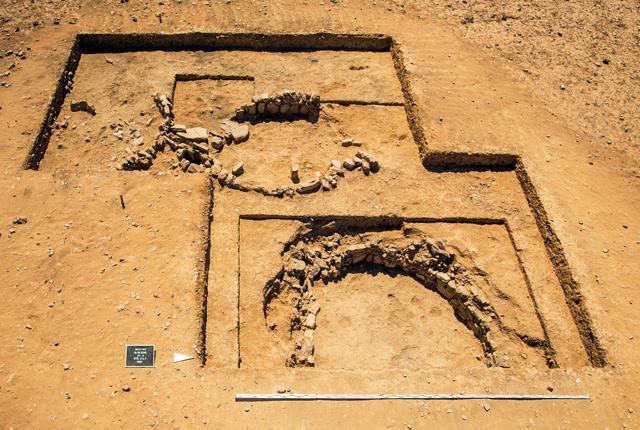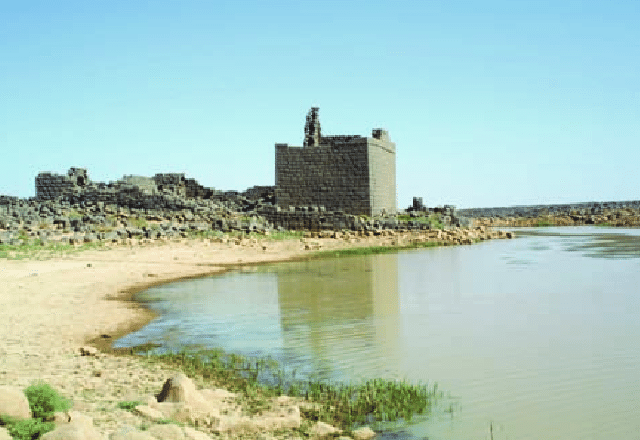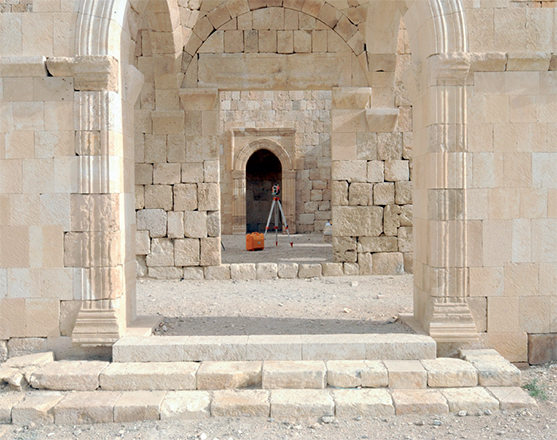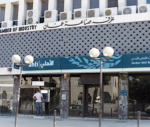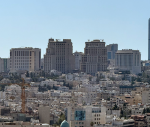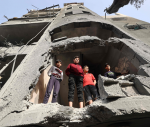You are here
German scholar explores lesser-known early Islamic settlements in northern Jordan
By Saeb Rawashdeh - Jan 11,2018 - Last updated at Jan 11,2018
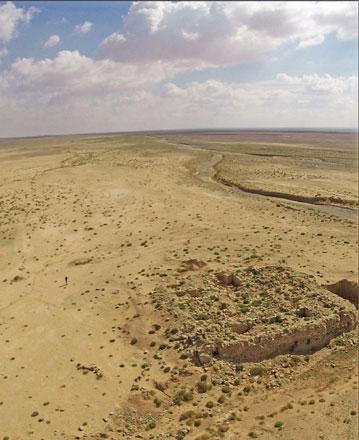
Remains of Qasr Mushash, 40 kilometres east of Amman (Photo courtesy of Karin Bartl)
AMMAN — Qasr Mushash, located 40 kilometres east of Amman, was probably used for postal services during the Umayyad period, according to a German archaeologist.
“Qasr Mushash is one of the lesser-known early Islamic settlements in Northern Jordan,” said Karin Bartl, adding that “the site was discovered by Alois Musil at the end of the 19th century, but was not studied until the early 1980s during a regional survey by British archaeologist Geoffrey King”.
Architectural units
The core of the village is located in the western part of the settlement and comprises a remarkable complex of buildings, about 200 metres to the west of the Qasr Mushash, she explained.
“It consists of a large, now almost completely destroyed square building with a central courtyard and surrounding rows of rooms, a bath [hammam] and a reservoir,” Bartl noted.
In the nearer and further surroundings of this “centre” are several building groups, while in the area of Wadi Mushash are a series of walls that are probably remains of dams, the German scholar elaborated.
“Together with some large reservoirs and cisterns, they document the sophisticated water management in early Islamic times,” Bartl, who was associate professor at Free University of Berlin and director of the research unit of the German Archaeological Institute at the German Protestant Institute in Amman, said.
The first detailed investigations were the excavations in the years 1982 and 1983 directed by Jordanian scholar Ghazi Bisheh, she remembered, adding: “He investigated the entrance of the qasr and the bath and its important results and the great research potential of the entire site prompted us to resume work in 2011.”
The team undertook a work between 2011 and 2017, which included the archaeological prospecting of the entire site and its surroundings, the stone-accurate recording of all visible architectural structures including the qasr, historical building research, soundings in the bath and qasr, and the creation of a topographical general plan of the ruin, Bartl pointed out.
It was a joint project between the Department of Antiquities of Jordan (DoA) and the Oriental Department of the German Archaeological Institute under the direction of Bisheh and Bartl, supported by Director General of the DoA Monther Jamhawi, the German archaeologist remembered.
“Through our work a detailed digital general plan of the topography as well as all visible building structures and water technical installations could be created. From this data, a three-dimensional terrain model can be created that clearly illustrates the complexity of the early Islamic settlement,” the expert emphasised.
However, some further soundings in the area of the bath show that this building was comparatively luxurious as finds of painted marble tiles that covered walls and floors, fragments of window panes in stucco frames and glass decoration elements reveal, Bartl stressed.
Bartl continued: “This charcoal was systematically collected and exported to Germany with the approval of the DoA to perform radiocarbon analyses for absolute dating. The results show that most buildings date to the Umayyad period (661-750).”
However, there are also some more recent dates from the 9th century and some older ones from the 5th to 7th centuries, she explained, and “these investigations are still ongoing”.
From Roman to Ummayad times
Qasr Mushash belongs to the type of the so-called desert castles or qusur, one of the most famous groups of monuments of the early Islamic period, the scholar highlighted.
She noted:”Qasr Mushash has no representative buildings except for the baths. There is no strucure that could be considered the residence of a ruler. The numerous water installations and the large square building-bath-reservoir complex in the centre of the settlement point to a caravan stop function on the route between Amman and Wadi Sirhan [south of Azraq], which is the main traffic route to inner Arabia.”
Furthermore, the numerous dams and barrages also make use as an estate conceivable, she claimed, adding that “despite the low annual rainfall, agricultural cultivation is possible in the region and is increasingly practiced again today”.
The oldest building in Qasr Mushash forms the “qasr” itself, which was founded probably as a Roman watch post in the 3rd-4th century (or even earlier), Bartl claimed.
“Unfortunately, no ruler names can be associated with Qasr Mushash. However, due to the fact that the names of caliph Al Walid I (705-715) and Yazid II (720-724) are assigned to adjacent sites such as Qusayr Amra and Al Muwaqqar, a period of use in the first half of the 8th century also conceivable for Qasr Mushash,”she said.
Although the archaeological fieldwork in Qasr Mushash ended in 2017, scholars are busy with the evaluation of the results of the research and they hope to complete the work on the manuscript for the final publication at the beginning of 2019.
“On the ground, we want to focus on the long-term protection of this important early Islamic site. Unfortunately, the place has been the target of illegal excavations and vandalism for many years, so many important areas are already heavily destroyed,” she warned.
The DoA therefore invited numerous stakeholders in the spring of 2017 to assess the situation on the spot. Currently, a catalogue of measures for the protection of the ruin is being jointly developed, which should then be implemented swiftly, Bartl concluded.
Related Articles
AMMAN — Mushash 163, a relatively small settlement of about 70 x 50 m located some 40km east of Amman near the early Islamic site Qasr Musha
AMMAN — The current research project of the German Archaeological Institute (DAI) in and around Qasr Burqu, a set of archaeological ruins in
AMMAN — The north-eastern Badia in Jordan was a strategic area among great powers in ancient times.

Opinion
Apr 07, 2025
Apr 07, 2025
Apr 07, 2025
Apr 06, 2025
- Popular
- Rated
- Commented
Apr 07, 2025
Apr 07, 2025
Apr 07, 2025
Newsletter
Get top stories and blog posts emailed to you each day.



